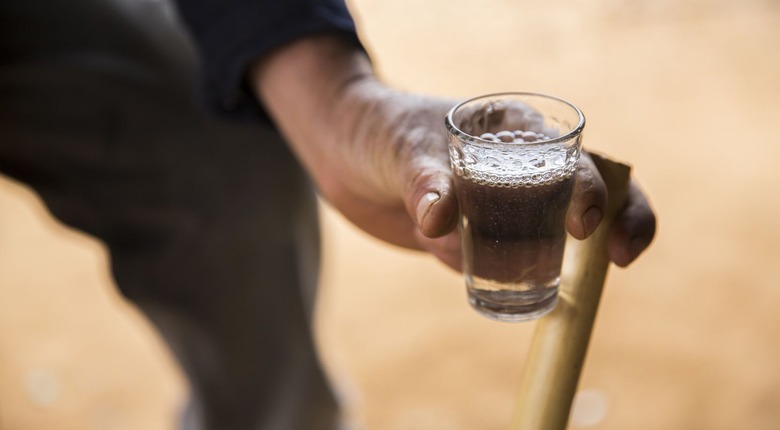Do You Know The Difference Between Mezcal And Tequila?
So you've decided to take the leap and learn a little more about tequila than you did in college. Congratulations! You most likely already know why you should ditch the crappy stuff and never drink any tequila that's not made with 100 percent agave, so now it's time to further your education by introducing you to mezcal (or mescal), which is arguably even more popular than tequila in Mexico and beginning to catch on in America like wildfire. We've come a long way since the days of Monte Alban with the worm on the bottom being the only type of mezcal available at most liquor stores; today there are plenty of high-quality mezcals on the market, like Ilegal, Del Maguey, and El Jolgorio. But before diving in to this newly popular spirit, it's important to know exactly what it is, and what separates it from its more famous cousin.
Mezcal, by definition, is any agave-based liquor, so technically tequila is a type of mezcal. But it's more complicated than that. There are a couple similarities between tequila and mezcal; they're both made from the hearts of agaves, for one, and they're both made in Mexico. But there are three main differences between the two: where in Mexico they're produced, what type of agave is used, and the production process.
In order to be called tequila, a spirit must be produced in the region of Jalisco or specific parts of the regions of Michoacán, Guanajuato, Nayarit, and Tamaulipas. Mezcal is primarily made in nine different regions of Mexico: Oaxaca, Durango, Guanajuato, Guerrero, San Luis Potosi, Tamaulipas, Zacatecas, Michoacán, and Puebla (about 85 percent of all mezcal is made in Oaxaca). There's some overlap in where they're produced, but they're defined by more than just location.[pullquote:left]
Tequila must be made from only one type of agave: the blue agave. Mezcal, on the other hand, can be made with nearly any type of agave, more than 30 varieties, in fact. If it's not already clear, the rules for mezcal-making are a little looser than those for tequila, but that's not a bad thing; it just means that there's a lot more variety in the mezcals out there.
Now on to the production process. To make tequila, the agave hearts (called piñas) are roasted in large ovens until the sugars caramelize, and then the resulting juice is fermented and distilled. With artisanal mezcal, the piñas are actually buried under a foot of earth in a large, deep, volcanic rock-lined pit with burning wood embers on the bottom. The heat slowly roasts the pinas over the course of several days, and then they're crushed, juiced, fermented, and distilled (the best mezcals are made with roasted piñas that have been crushed via a horse or donkey pulling a giant stone wheel over them). That long, slow roasting process is also what gives mezcal its signature smoky character.
Mezcal has a flavor that's unlike anything else out there, and because mezcals can be made with so many different types of agave, each variety tastes different. There's a whole world of mezcals out there. Why not go exploring?
